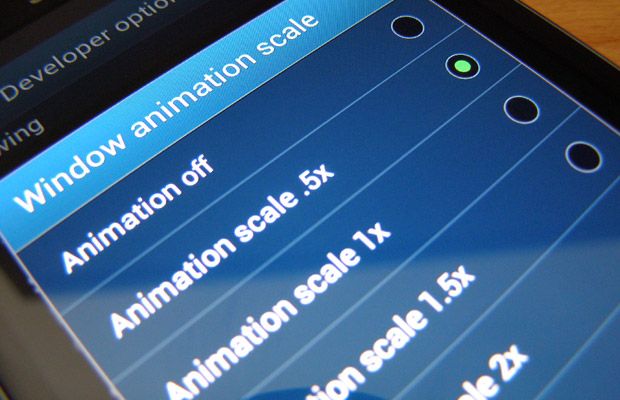Smart animations

We spend more and more time on mobile devices which means that a lot of our time is devoted to looking at a screen and waiting for something to happen. The problem is that I feel like we're spending too much time on watching animations instead of actually getting to our content or results faster.
This article was spawned based on a talk with a friend who recently upgraded to iOS 7 and was complaining about everything feeling out of sync, or slower if you will, coming from older versions of the operating system, because animations now take longer overall despite them being fluid and psyhicsy and stuff.
I'm not sure how iOS handles that as I don't own any Apple products nor have I had enough time to play with one to form my own opinion, but the same thing is valid on Android, and to some extent applies to desktop platforms as well.
On Android you can set the animation and transition speeds globally; you want them faster, make them faster, and so on, but why should you have to do that? Especially considering that they're hidden away under developer settings. Wouldn't it be nice if applications had the option to intelligently determine how fast you want things to be?
I'm imagining installing a content reading app (be it RSS feeds, books, tweets, whatever) which has gorgeous animations and transitions. Sure, it's awesome at first to look at just how beautiful that page turn is, or that new pane swings in from the side, but as I start using the app more frequently I want to get to my content faster, which means that I want to spend as little time on visual bling as possible.
Why not have an application reduce or increase the time a transition takes, or the "springiness" of it based on how long you've used the app for? Say it has the system default settings for the first 5 hours of total use, and then starts slowly ramping up the speed so you get to do things faster? Or it notices that you haven't used the app for some time and reduces the speed of things so you can get acclimated to it again?
This might seem a bit counter-intuitive - "wouldn't varying the graphical speed make me miss targets?", but I think that if the speed-curve is properly done then you wouldn't even notice. In the end, as we get more proficient with a tool we can use it faster (think going from using a GUI to using keyboard shortcuts on a regular OS), so why not make the app adaptable so that it meets us half-way based on our usage patterns?